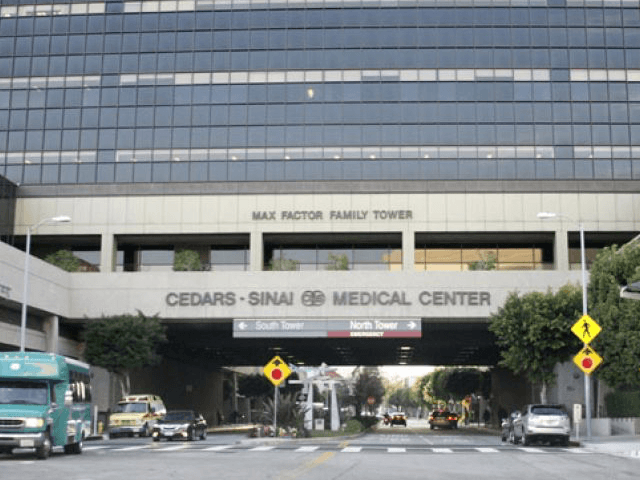Four patients at Cedars-Sinai have contracted the “CRE super-bug.” One has died and 67 are at risk of exposure, according to a hospital spokesman. The latest outbreak follows the death of two patients, near-death of five, and exposure to 179 patients in a similar outbreak from October through early January at UCLA’s Ronald Reagan Medical Center. In both occurrences the culprit seems to have been contaminated body scopes.
The term “superbug” refers to bacteria that have mutated to become drug-resistant. Although the public is unaware of the growing risks from super-bugs, drug resistant staph infections already kill about 19,000 people per year in America, The CRE superbug is medically known as carbapenem-resistant Enterobacteriaceae (CRE).
There are two common links between the UCLA and Cedars-Sinai superbugs. The two world renowned hospitals are only 5.7 miles apart and they appear to have both transmitted superbug bacteria during a procedure known as ERCP (endoscopic retrograde cholangiopancreatography). Both hospitals used EVIS EXERA II (TJF-Q180V) Duodenoscopes manufactured by Japanese electronic imaging giant Olympus Corporation of America and serviced by the same technical source.
About a half a million Americans undergo ERCP each year, in which a fiber-optic scope is threaded down the person’s throat to diagnose and therapeutically treat problems in the digestive tract such as pancreatitis, gallstones, cancers and blockages in the bile duct.
Over the last seven months, CRE transmissions have been confirmed from patients from undergoing ERCP procedures using Olympus duodenoscopes at UCLA, Cedars-Sinai, and Seattle’s Virginia Mason Medical Center.
Cedars-Sinai proactively launched an investigation regarding its own ERCP scopes and patient records after the media broke the superbug deaths at UCLA. Cedars-Sinai’s infection-control experts used genetic and molecular analysis to identify the unique CRE “fingerprint.”
CRE is an especially dangerous superbug, since it is so resistant to antibiotics; up to 50% of infected patients die.
To prevent further infections, Cedars-Sinai quarantined its tainted scope and adopted a protocol hospital-wide enhanced anti-bacteria safety monitoring for contamination. The hospital also offered patients possibly exposed to CRE a free home testing kit.
Consumer advocate Lisa McGiffert, Director of the Safe Patient Project at Consumers Union, told the Los Angeles Times that the intense scrutiny comes too late for some patients: “It’s really horrific to know so many people underwent these procedures when they could have known the danger beforehand,” she said. “They went in trusting the system, and the system broke down.”
The timing of the announcement by Cedars-Sinai follows the filling of a wrongful death lawsuit by the surviving family of 48-year-old Antonia Torres Cerda against Olympus as the maker of the CRE contaminated device. Although Cerda was treated in October, the suspected CRE contaminated duodenoscope appears to have reused on another 178 patients through January.
The Los Angeles County Superior Court complaint states that Ms. Cerda was exposed to CRE and as a result “suffered significant injury and died.” In addition to wrongful death, the family’s complaint accuses the company of negligence and fraud in selling and promoting a “defective” scope. The family’s attorney said Ms. Cerda died Nov. 8.
UCLA patient Aaron Young also sued Olympus last week for negligence in connection with his CRE infection from the same tainted scope. The 18-year-old high-school student has suffered enormous pain and is still hospitalized in quarantine at UCLA, according to attorney Pete Kaufman, who represents the Cerda and Young families.
The suit on behalf of Ms. Cerda lists her as having a spouse, four children in Kings County and a parent in Mexico. Kaufman said UCLA and University of California Regents may be added as defendants, if details of liability emerge.
Lawmakers, consumer advocates and patient families have criticized healthcare regulators regarding the ineffectiveness of anti-bacterial drugs to fight superbugs. But much of the problem has been that antibacterial drug resistance has become a growing problem from people over-using antibiotics. There has also been little incentive for the pharmaceutical companies to invest money knowing that superbugs tend to mutate to beat the new drug.
Stratfor says that because antibiotic-resistant staph infections and tuberculosis cases are becoming so numerous, “our entire species could be at risk.” That has incentivized researchers, governments and drug companies to launch crash programs to develop new compounds called “teixobactins” that target an entirely different part of bacteria cells than antibiotics. The new treatments deny superbugs the same potential to develop resistance.
The new class of drugs to kill superbugs is being funded and the testing expedited by huge government grants. Pharmaceutical companies expect it will take about five years for the drugs to reach the market. But in ten years, “superbugs” may be a forgotten term.

COMMENTS
Please let us know if you're having issues with commenting.